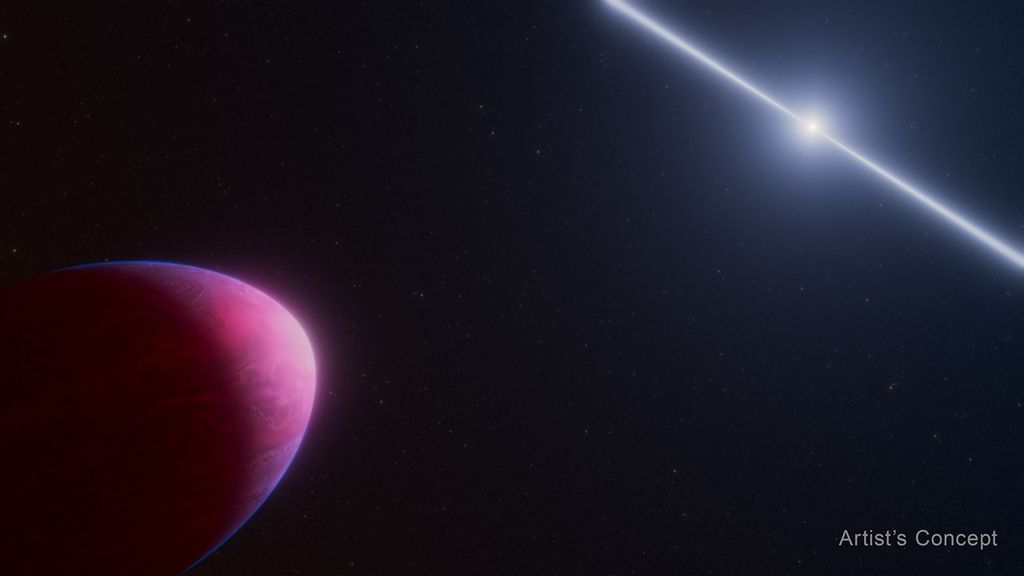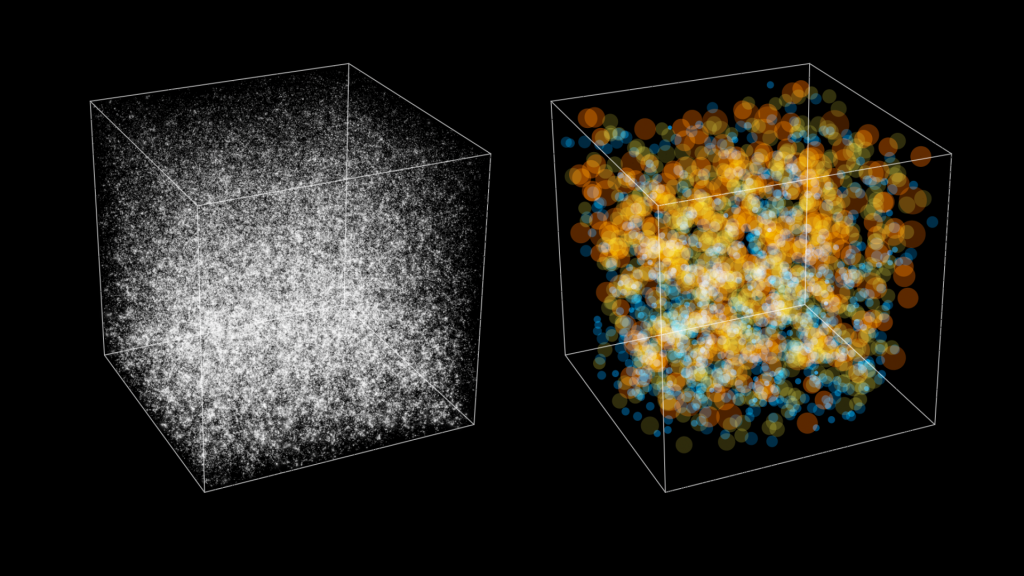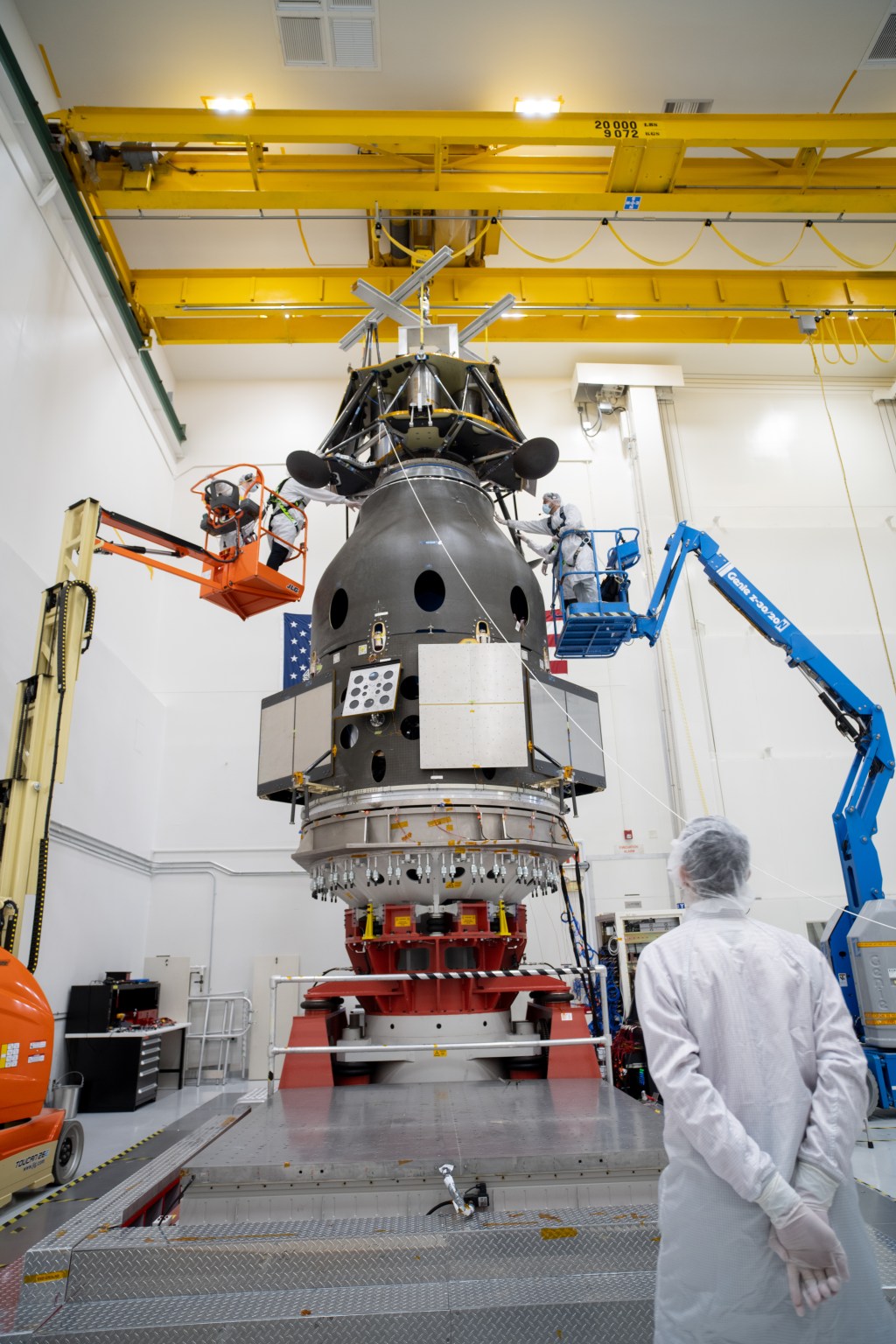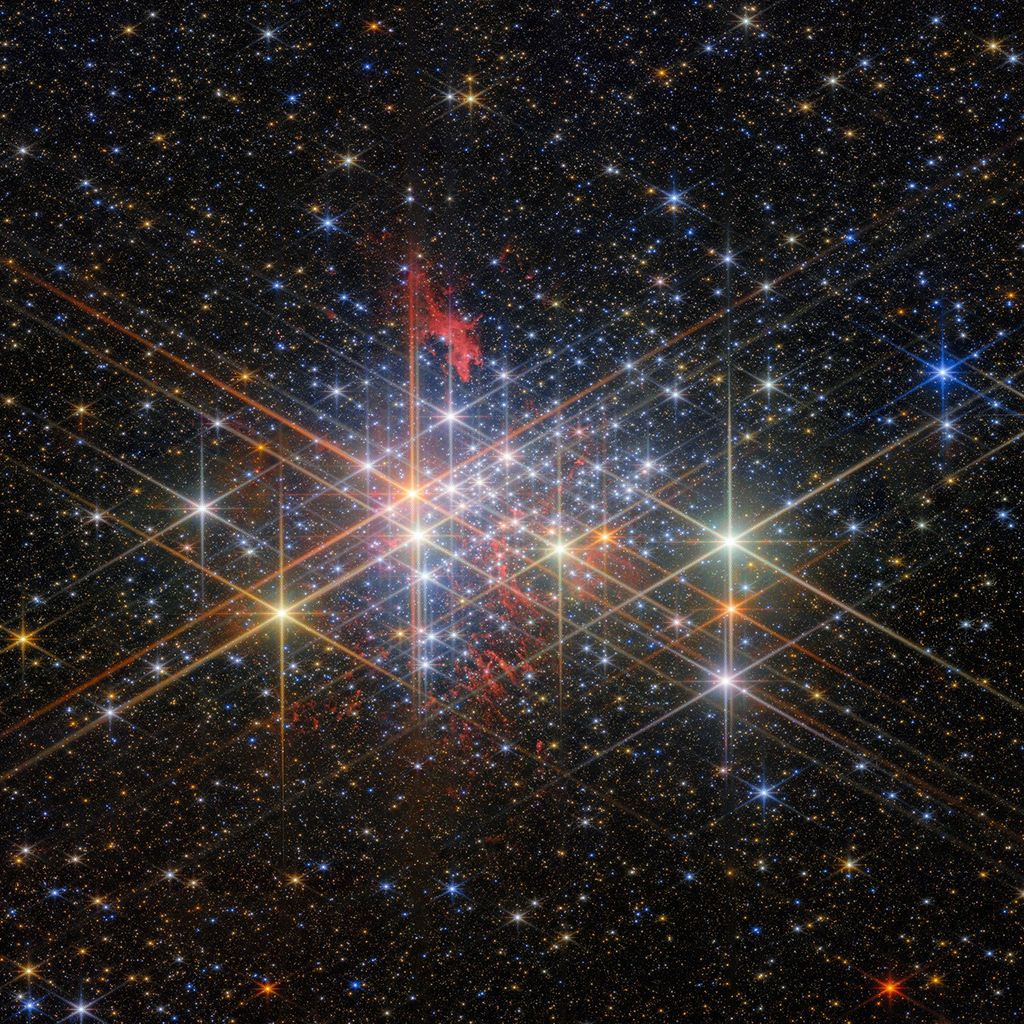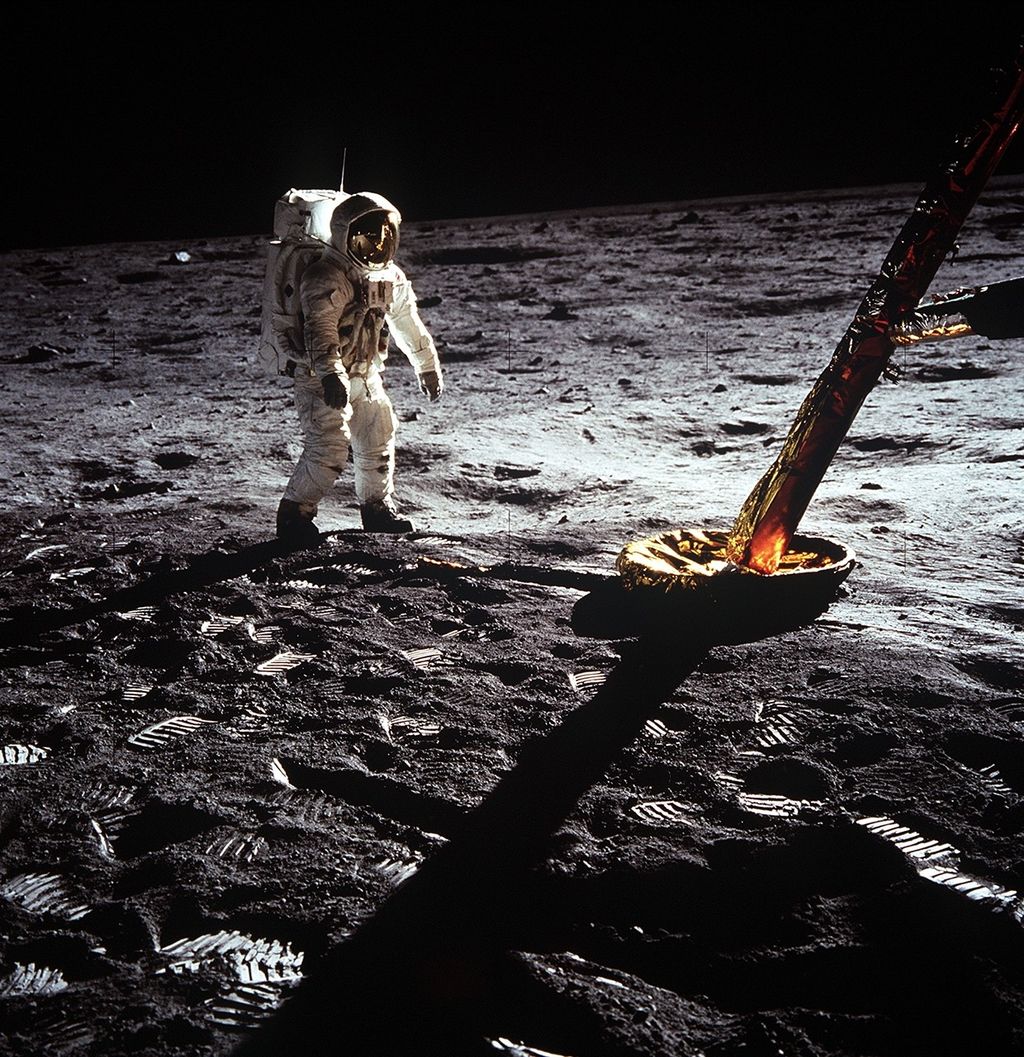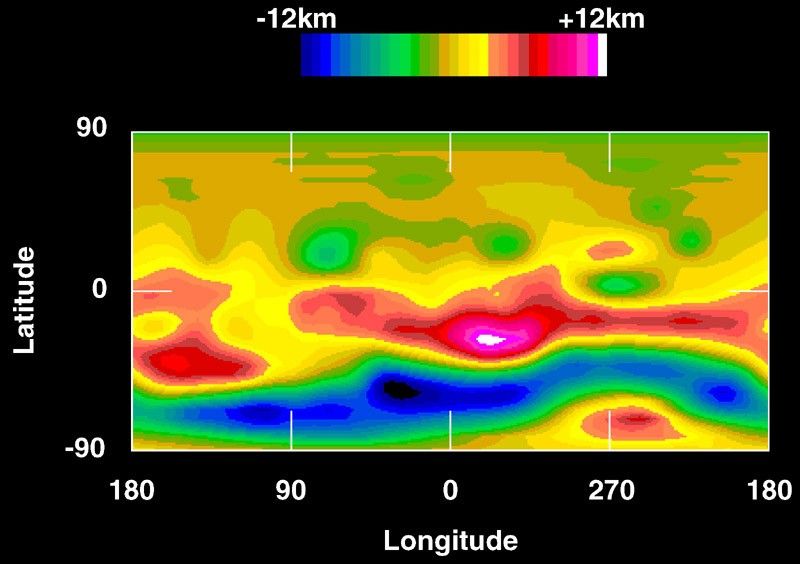1 min read
Hubble Reveals Huge Crater on the Surface of the Asteroid Vesta
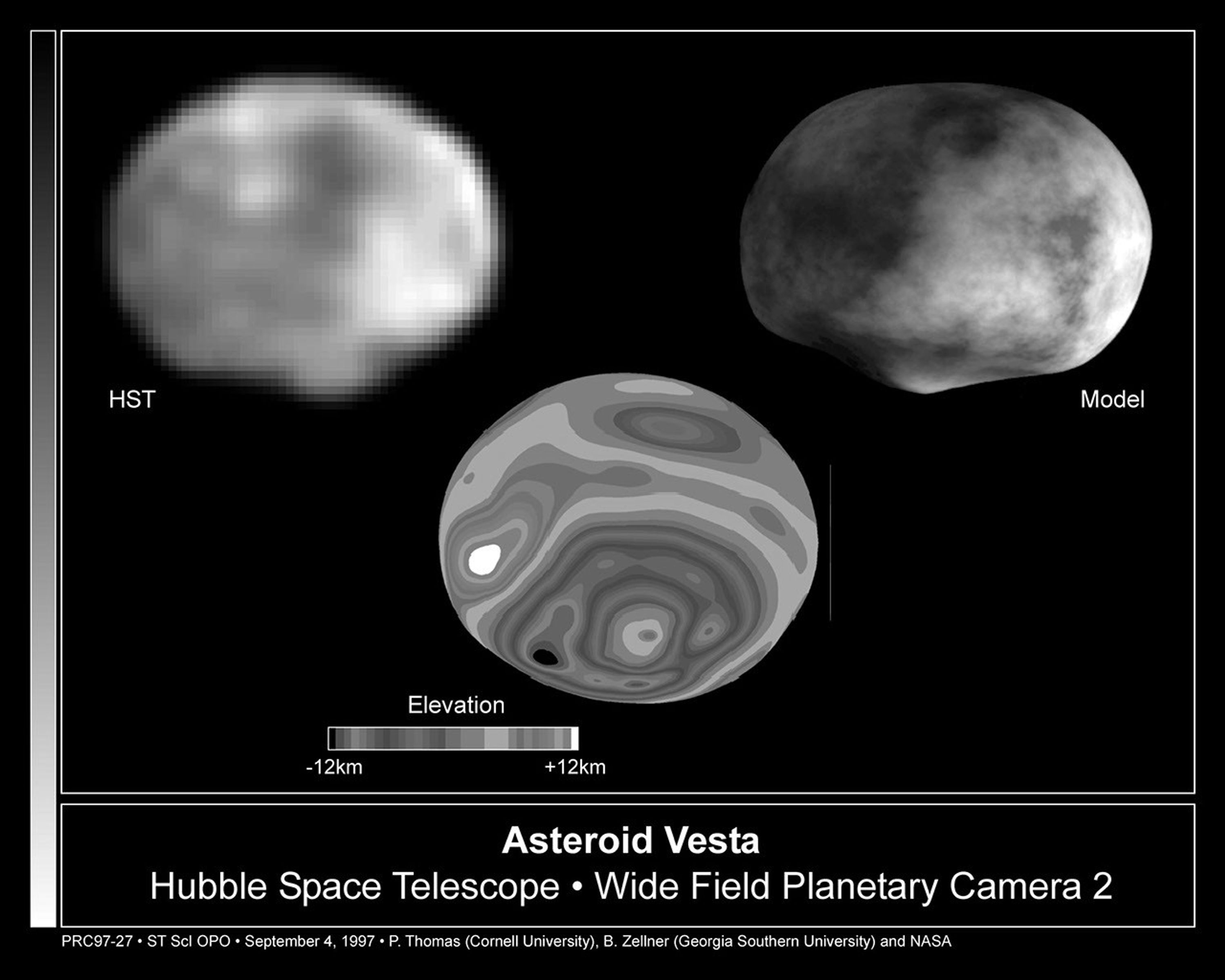
[left] A NASA Hubble Space Telescope image of the asteroid Vesta, taken in May 1996 when the asteroid was 110 million miles from Earth. The asymmetry of the asteroid and "nub" and the south pole is suggestive that it suffered a large impact event. The image was digitally restored to yield an effective scale of six miles per pixel (picture element).
[center] A color-encoded elevation map of Vesta clearly shows the giant 285- mile diameter impact basin and "bull's-eye" central peak. The map was constructed from 78 Wide Field Planetary Camera 2 pictures. Surface topography was estimated by noting irregularities along the limb and at the terminator (day/night boundary) where shadows are enhanced by the low Sun angle.
[right] A 3-D computer model of the asteroid Vesta synthesized from Hubble topographic data. The crater's 8-mile high central peak can clearly be seen near the pole. The surface texture on the model is artificial, and is not representative of the true brightness variations on the asteroid. Elevation features have not been exaggerated.
- Object NameObject NameA name or catalog number that astronomers use to identify an astronomical object.Vesta
- Release DateSeptember 4, 1997
- Science ReleaseHubble Reveals Huge Crater on the Surface of the Asteroid Vesta
- CreditBen Zellner (Georgia Southern University), Peter Thomas (Cornell University) and NASA
Related Images & Videos
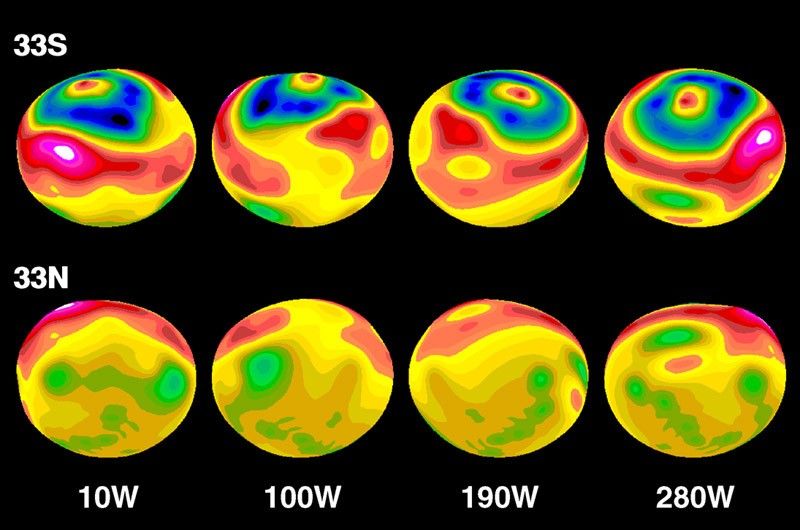
Topographic Map of Vesta's Surface Modeled onto Elliptical Shape
A false-color topographic map, projected onto a model having Vesta's elliptical shape. A circular impact crater, with central peak, clearly dominates the southern hemisphere. The model has bee rotated at 90 degree intervals. The map is based on photo-analysis of Hubble Space...

Color-encoded Elevation Map of Vesta
A color-encoded elevation map of Vesta clearly shows the giant 285- mile diameter impact basin and "bull's-eye" central peak. The map was constructed from 78 Wide Field Planetary Camera 2 pictures. Surface topography was estimated by noting irregularities along the limb and at...

Computer Model of the Asteroid Vesta
A 3-D computer model of the asteroid Vesta synthesized from Hubble topographic data. The crater's 8-mile high central peak can clearly be seen near the pole. The surface texture on the model is artificial, and is not representative of the true brightness variations on the...
Share
Details
Claire Andreoli
NASA’s Goddard Space Flight Center
Greenbelt, Maryland
claire.andreoli@nasa.gov


